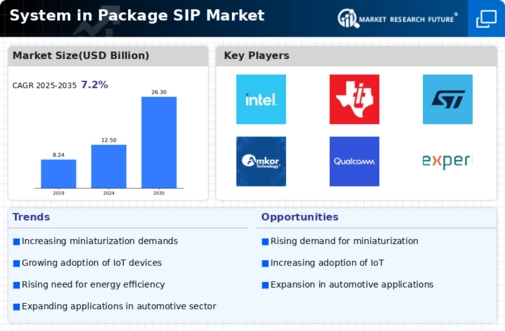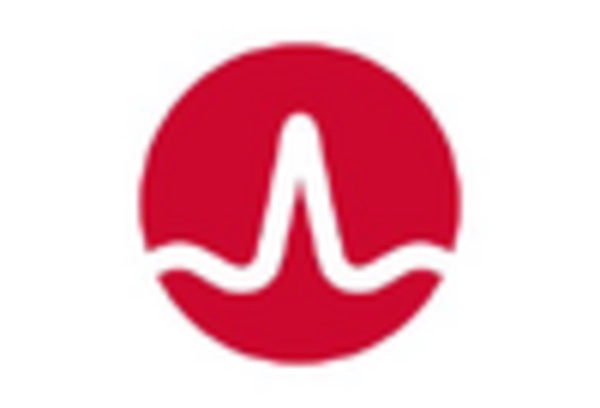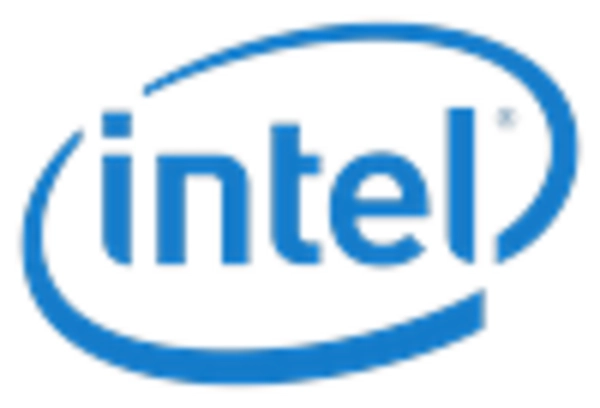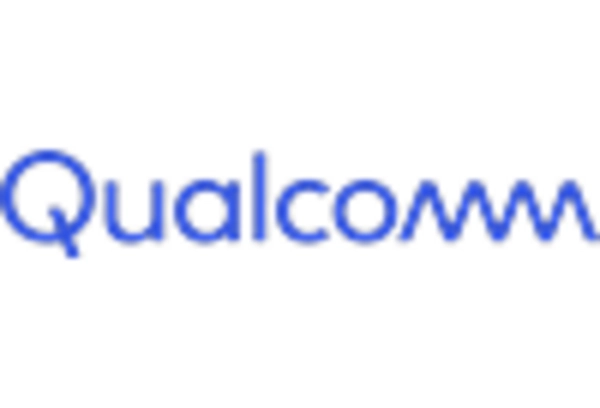Increased Focus on Energy Efficiency
The System in Package SIP Market is witnessing a heightened focus on energy efficiency, driven by both regulatory pressures and consumer preferences. As energy costs rise and environmental concerns become more pronounced, manufacturers are compelled to develop solutions that minimize power consumption. SIP technology offers a pathway to achieve these goals by enabling the design of energy-efficient devices that require less power while maintaining performance. The energy-efficient electronics market is projected to grow significantly, with estimates indicating a potential market size of over 300 billion dollars by 2025. This trend is likely to enhance the System in Package SIP Market as companies prioritize energy-efficient designs.
Rising Demand for Consumer Electronics
The System in Package SIP Market is experiencing a notable surge in demand driven by the increasing consumption of consumer electronics. As devices such as smartphones, tablets, and wearables become more prevalent, the need for compact and efficient packaging solutions intensifies. The SIP technology allows for the integration of multiple functions into a single package, thereby enhancing performance while minimizing space. According to recent estimates, the consumer electronics sector is projected to grow at a compound annual growth rate of approximately 6% over the next few years. This growth is likely to propel the System in Package SIP Market, as manufacturers seek innovative solutions to meet consumer expectations for smaller, more powerful devices.
Advancements in Semiconductor Technology
Technological advancements in semiconductor manufacturing are significantly influencing the System in Package SIP Market. Innovations such as 3D packaging and advanced materials are enabling the development of more sophisticated SIP solutions. These advancements facilitate higher integration levels, improved thermal management, and enhanced electrical performance. The semiconductor industry is projected to reach a market size of over 600 billion dollars by 2025, indicating a robust growth trajectory. This growth is expected to positively impact the System in Package SIP Market, as companies increasingly adopt SIP technologies to leverage these advancements and improve product offerings.
Emerging Applications in Automotive Electronics
The automotive sector is increasingly adopting System in Package SIP Market technology, which serves as a crucial driver for the System in Package SIP Market. With the rise of electric vehicles and advanced driver-assistance systems (ADAS), the demand for compact and reliable electronic components is escalating. SIP solutions provide the necessary integration and performance required for these applications, facilitating the development of smarter and safer vehicles. The automotive electronics market is expected to grow at a robust pace, with projections suggesting it could exceed 400 billion dollars by 2025. This growth is likely to further stimulate the System in Package SIP Market as automotive manufacturers seek innovative packaging solutions.
Growth in Internet of Things (IoT) Applications
The proliferation of Internet of Things (IoT) applications is a key driver for the System in Package SIP Market. As IoT devices become ubiquitous across various sectors, including healthcare, automotive, and smart homes, the demand for efficient and compact packaging solutions rises. SIP technology is particularly well-suited for IoT applications due to its ability to integrate multiple functionalities into a single package, thus optimizing space and power consumption. The IoT market is anticipated to grow exponentially, with estimates suggesting it could reach a valuation of over 1 trillion dollars by 2025. This growth trajectory is likely to bolster the System in Package SIP Market as manufacturers seek to capitalize on the opportunities presented by IoT.
















Leave a Comment